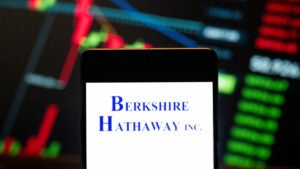What are the ‘Dogs of the Dow’ in 2025?

Every year, some investors turn to a strategy called the “Dogs of the Dow,” which singles out the highest-yielding, yet underperforming, stocks in the Dow Jones Industrial Average. But what’s the point of choosing to invest in underperforming stocks, and why do some investors adopt this approach?
Here’s how the Dogs of the Dow strategy works, which stocks it comprises and how it compares to other similar strategies.
What are the Dogs of the Dow?
The Dogs of the Dow is the name of an investment strategy in which investors buy shares of the 10 highest-yielding Dow dividend stocks, typically at the beginning of every year.
After the market’s final close in December, investors identify the top 10 stocks in this category by calculating the dividend yield, which is the annual dividend per share divided by the price per share. You can do the math yourself, but the list of 10 can usually be found on various websites at the beginning of each year. Then, on the first trading day in January, you invest an equal amount into each of the 10 stocks and hold them for one year. The strategy is intended to mirror the performance of the Dow Jones Industrial Average.
There are some key market assumptions that go into this approach. First, the strategy presupposes that blue chip companies maintain a stable dividend payout despite what the market may be doing. Second, though the dividend is assumed to remain stable, the stock prices can still fluctuate.
The idea is that when a company has a high dividend yield, it suggests the stock is relatively undervalued and the share price may appreciate faster than peers in the future as the dividend yield comes back in line with those of other companies. These stocks are attractive to value investors because they offer, in theory, both income and capital appreciation over time.
Which stocks make up the Dogs of the Dow?
At the end of the year, investors following this playbook rebalance their portfolios to realign with the current top 10 highest-yielding Dow dividend stocks. Here is the list for 2025:
| Company | Ticker | Yield |
|---|---|---|
| Verizon Communications | VZ | 6.78% |
| Chevron | CVX | 4.50% |
| Amgen | AMGN | 3.65% |
| Johnson & Johnson | JNJ | 3.43% |
| Merck | MRK | 3.26% |
| Coca-Cola | KO | 3.12% |
| IBM | IBM | 3.04% |
| Cisco Systems | CSCO | 2.70% |
| McDonald’s | MCD | 2.44% |
| Procter & Gamble | PG | 2.40% |
Source: DogsoftheDow.com as of Jan. 22, 2025.
If you want to dive a bit deeper into the strategy and its performance, you can examine analysts’ opinions, historical performance and charts. All in all, the Dogs of the Dow approach is designed to be simple and low maintenance.
Broadly, the strategy has a noteworthy track record of returns, but its performance can vary depending on the wider economic conditions in the market. Since about 2000, it has had an average annual total return of 8.7 percent.
Investing in high-dividend-yield ETFs
A similar approach that can mirror the Dogs of the Dow strategy might be investing in exchange-traded funds (ETFs) that target high-dividend-yield stocks and/or similar companies like those found in the Dogs of the Dow.
While there’s no ETF that specifically uses the Dogs of the Dow strategy, the Invesco Dow Jones Industrial Average Dividend ETF (DJD) is one that comes close. With $317 million in assets under management, this ETF weights its constituents by their 12-month dividend yield, similar to the Dogs of the Dow approach. The Invesco ETF, however, allocates investments based on the dividend yield of each stock in the index, giving more weight to higher-yielding stocks.
ETFs attempting to mirror the Dogs of the Dow strategy can potentially enhance diversification by spreading risk more effectively across a broader set of securities with different weightings, rather than focusing specifically on the top 10 highest-yielding dividend stocks.
However, investors are generally advised to own more than just 10 individual stocks in their portfolios. If you’re going to buy the Dogs of the Dow, then make it an additional strategy within an already-existing portfolio, rather than your only playbook.
Bottom line
The Dogs of the Dow is an investment strategy that identifies the highest-yielding, yet underperforming, stocks in the Dow Jones Industrial Average in an attempt to achieve share-price gains faster than peers with lower yields. There are some ETFs that follow similar, but not identical, blueprints. All in all, the safest bet is to maintain a diversified portfolio. If you choose to try the Dogs of the Dow approach, it should be attempted alongside your already-existing investments, not as the only strategy you partake in.
All investors are advised to conduct their own independent research into investment strategies before making an investment decision. In addition, investors are advised that past investment product performance is no guarantee of future price appreciation.






